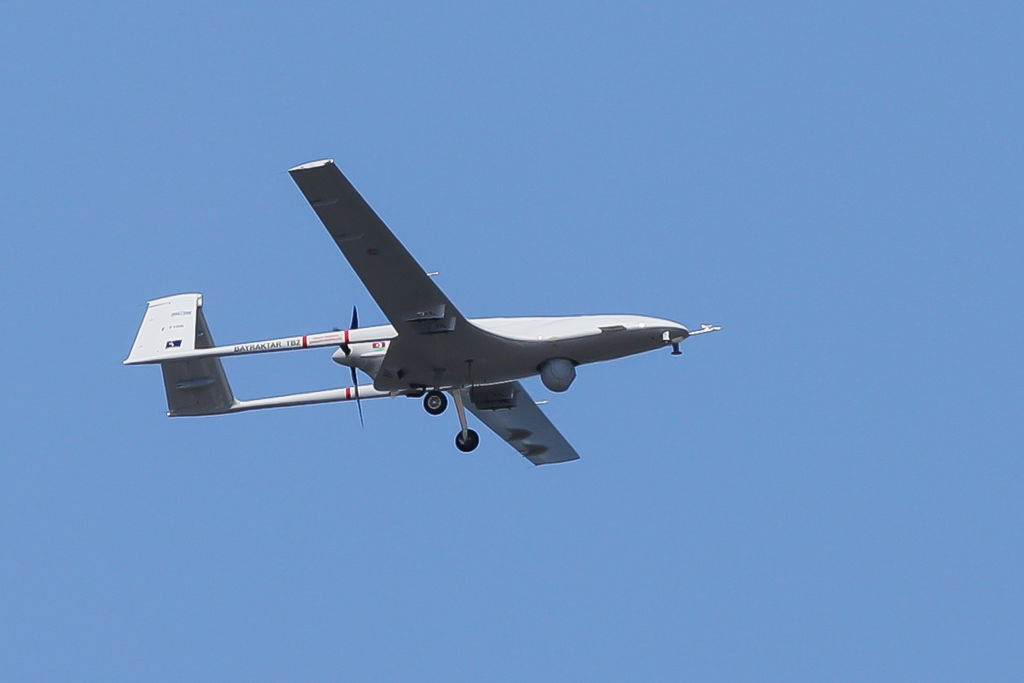Now in its third year, civil war in Sudan between the Sudanese Armed Forces and the paramilitary Rapid Support Forces (RSF) has changed from one dominated by ground forces and heavy weapons to a tit-for-tat aerial war with unmanned drones as the chief weapons.
Starting in January, the national Sudanese forces, known as the SAF, used Turkish-made Bayraktar TB-2 drones to attack rebel RSF positions and supply lines in the capital region and al-Gezira state to the southeast. The assault ultimately drove RSF fighters from both locations, giving the army major victories that pushed the RSF back into its stronghold in western Sudan.
From there, the RSF relied on loitering drones, launched from Nyala in South Darfur, to attack SAF positions. Loitering drones are designed to hang in the air above a target waiting to strike on command. They can either drop ordnance or slam into the target and explode.
The use of drones to attack enemy positions is a significant change for both sides in Sudan’s war. Earlier in the conflict, both sides used drones for reconnaissance and intelligence-gathering. While the rebel forces quickly overwhelmed Sudan’s military on the ground, the SAF maintained air superiority through its Air Force. The RSF managed to neutralize the SAF’s aerial advantage with surface-to-air missiles and anti-aircraft weapons acquired from Russian mercenaries in Libya.
Enter armed drones.
With their small profile and long-range capabilities, armed drones have proven to be an effective weapon for targeting enemy resources, as the SAF did in destroying an Emirate cargo plane at the Nyala airport. They can also be used in destroying key infrastructure, which was a primary goal of the RSF drone bombardment of Port Sudan.
One of the targets of the Port Sudan attack is believed to have been a hangar housing the SAF’s Bayraktar TB-2 drones.
“The potential targeting and disruption of UAV [drone] launch platforms now poses a strategically significant threat to the operational capabilities of the Sudanese Armed Forces and may effectively challenge SAF’s air superiority,” analyst Albadawi Rahmtall wrote recently for Military Africa.
The attack on Port Sudan did more than disrupt key infrastructure in Sudan’s wartime capital. It had a psychological impact on the residents of the region who had until then been insulated from the violence elsewhere in Sudan.
“It’s unlikely that the RSF can retake Khartoum or reach Port Sudan by land, but drones enable them to create a sense of fear and destabilize cities,” Sudanese analyst Hamid Khalafallah told Agence France-Presse.
According to Rahmtall, the RSF may launch swarms of drones against SAF targets with the intention of simply overwhelming the defenses. The RSF’s losses to the SAF this year, especially the loss of Khartoum, have damaged its ability to recruit new fighters, experts say. Through its use of Chinese-made long-range drones, the RSF aims to send the message that the war isn’t over, according to Khalafallah.
Drones have enabled both sides to attack each other while sparing their ground forces. While drones inflict both physical and psychological damage, they can’t hold territory. Only human troops can do that, say experts.
“Air superiority unlinked to the ability to exploit ground conditions and alter military geography diminishes the value of airstrikes and reduces their military and political significance,” Rahmtall wrote.

